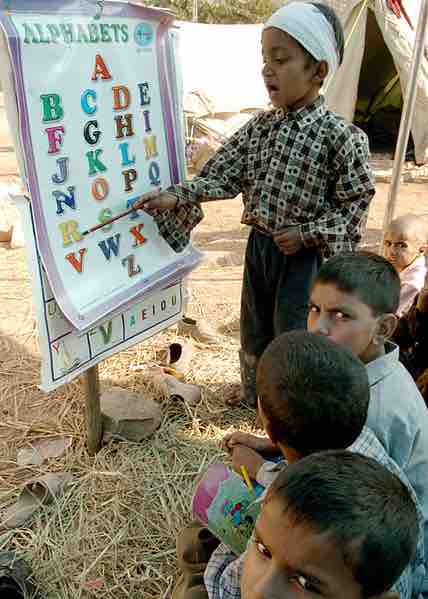English as a second language (ESL), English for speakers of other languages (ESOL) and English as a foreign language (EFL) all refer to the use or study of English by speakers with different native languages. Generally, English Language Learners (ELL) are refugees, immigrants, or their children. They must learn English as a Second Language (ESL) in order to function in their new host country. In the U.S. over the last twenty years, more than 70% of non-English-speaking school-age immigrants have arrived in the U.S. before they were 6 years old. At this age, they could have been taught English in school, and achieved a proficiency indistinguishable from a native speaker. In other countries, such as the Russia, France, Spain, and Germany this approach has dramatically improved reading and math test scores for linguistic minorities. Supporters of ESL programs claim they play an important role in the formation of peer networks and adjustment to school and society in their new homes. Having class among other students learning English as a second language relieves the pressure of making mistakes when speaking in class or to peers. ESL programs also allow students to meet and form friendships with other non-native speakers from different cultures, promoting racial tolerance and multiculturalism.
Potential Academic Barriers for ELL Students
Nevertheless, ELL students face predictable difficulties in learning English. Those whose native languages are drastically different from English may find it especially difficult to learn the sounds and grammar of English, while others whose native languages are more similar may have less trouble. But these students also face difficulties unrelated to learning the language itself, including the possibility of having their abilities underestimated, a higher probability of dropping out, difficulty paying for and succeeding in college, and social problems connecting with native speakers. ELL students are often tracked with lower ability students because they have lower standardized test scores, which may inaccurately measure their academic ability.
ELL students are also more likely to drop out of high school. Their higher dropout rates may be due to difficulties in keeping up in mainstream classes or to prior interruptions in their formal education. For example, some ELL students may have spent time in refugee camps where they had no opportunity to attend school. Further, some have speculated that school administrators may actually encourage ELL students to drop out because it may increase the school's overall average test scores, which may in turn benefit the school (e.g., by ensuring continued funding).
ELL students face additional barriers to pursuing higher education. Most colleges and universities require four years of English in high school, but many will accept only one year of ESL English. ELL students who arrive in the United States relatively late may find it difficult to meet this requirement because they must spend a longer time in ESL English classes in high school, or because they might not arrive early enough to complete four years of English in high school. Consequently, some ELL students lack the required credits to apply for college.
ELL students can also face financial barriers to higher education. Those who do not place high enough on college placement exams often have to enroll in ESL courses at their universities. Often, they must pay fees for these courses in addition to tuition, and these courses may not count as credit towards graduation. These additional fees add to the financial burden faced by ELL students who often come from families of lower socioeconomic status. The latest statistics show that the median household income for school-age ELL students is $36,691 while that of non-ELL students is $60,280.
ELL students often have difficulty interacting with native speakers. ELL students may avoid interactions with native speakers because they are frustrated with or embarrassed by their English ability. Immigrant students often also lack knowledge about popular U.S. culture, which limits their conversations with native speakers to academic topics. In classroom group activities with native speakers, ELL students often do not participate, again because of embarrassment of their English, but also because of cultural differences which value silence and individual work at school over social interaction and talking in class. These interactions have been found to extend to teacher-student interactions as well. In most mainstream classrooms, teacher-led discussion is the most common form of lesson. In this setting, ELL students will fail to participate, and often have difficulty understanding teachers because they talk too fast, do not use visual aids, or use native colloquialisms. ELL students also have trouble getting involved with extracurricular activities with native speakers for similar reasons. Students fail to join extra-curricular activities because of the language barrier, cultural emphasis of academics over other activities, or failure to understand traditional pastimes in their new country.

Displaced Pakistani children learn English as a second language
Displaced Pakistani children located at the Dewan Tent Village attend school in Muzaffarabad, Pakistan. Children are taught English as their second language in the 3rd grade. The United States is participating in a multi-national assistance and support effort led by the Pakistani Government to bring aid to the victims of the devastating earthquake that struck the region on October 8th, 2005. U.S. Navy photo by Photographer's Mate 2nd Class Eric S. Powell